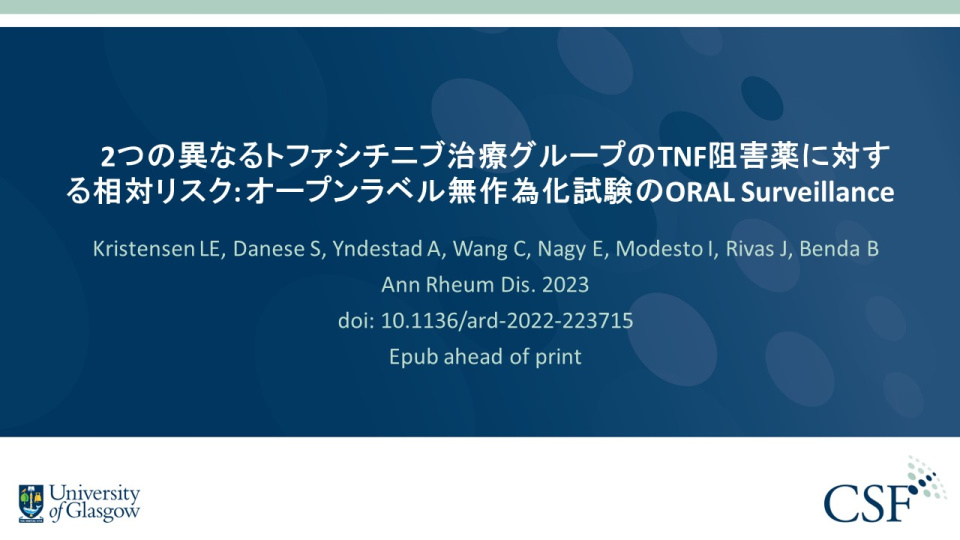2つの異なるトファシチニブ治療グループのTNF阻害薬に対する相対リスク: オープンラベル無作為化試験のORAL Surveillance
Ann Rheum Dis. 2023;82(7):901-910 doi: 10.1136/ard-2022-223715
Findings from a post hoc analysis of ORAL Surveillance can help guide individualised benefit/risk assessment and clinical decision-making on treatment with tofacitinib, based on identification of subpopulations ‘at risk’.
Previous analyses from ORAL Surveillance have identified age and smoking as independent risk factors of interest across safety outcomes. Based on these findings, Kristensen, et al. aimed to find easily identifiable and clinically practical subpopulations with different relative risk vs TNFi (i.e., ‘high-risk’ and ‘low-risk’).

